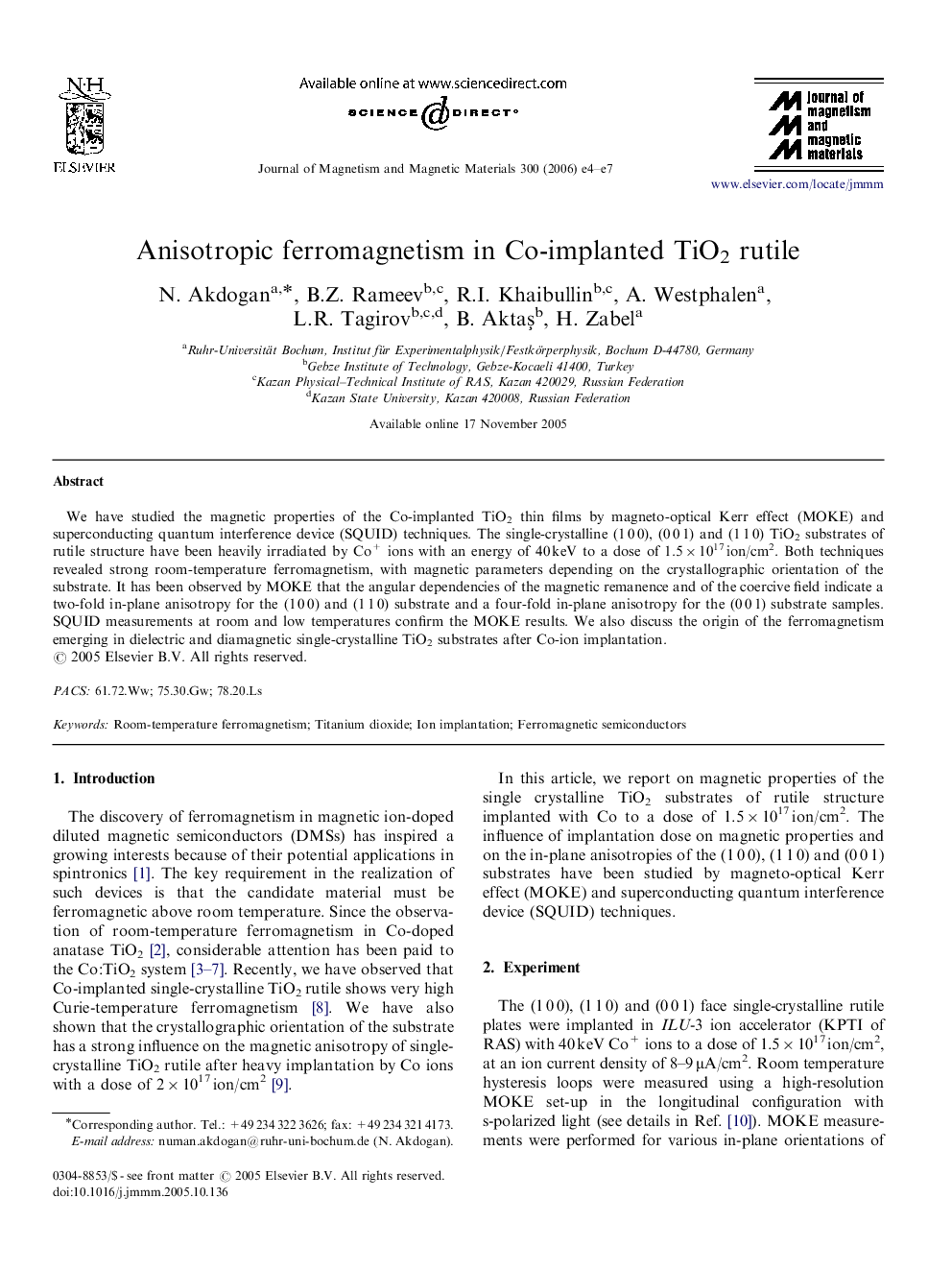| Article ID | Journal | Published Year | Pages | File Type |
|---|---|---|---|---|
| 1803360 | Journal of Magnetism and Magnetic Materials | 2006 | 4 Pages |
Abstract
We have studied the magnetic properties of the Co-implanted TiO2 thin films by magneto-optical Kerr effect (MOKE) and superconducting quantum interference device (SQUID) techniques. The single-crystalline (1Â 0Â 0), (0Â 0Â 1) and (1Â 1Â 0) TiO2 substrates of rutile structure have been heavily irradiated by Co+ ions with an energy of 40Â keV to a dose of 1.5Ã1017Â ion/cm2. Both techniques revealed strong room-temperature ferromagnetism, with magnetic parameters depending on the crystallographic orientation of the substrate. It has been observed by MOKE that the angular dependencies of the magnetic remanence and of the coercive field indicate a two-fold in-plane anisotropy for the (1Â 0Â 0) and (1Â 1Â 0) substrate and a four-fold in-plane anisotropy for the (0Â 0Â 1) substrate samples. SQUID measurements at room and low temperatures confirm the MOKE results. We also discuss the origin of the ferromagnetism emerging in dielectric and diamagnetic single-crystalline TiO2 substrates after Co-ion implantation.
Keywords
Related Topics
Physical Sciences and Engineering
Physics and Astronomy
Condensed Matter Physics
Authors
N. Akdogan, B.Z. Rameev, R.I. Khaibullin, A. Westphalen, L.R. Tagirov, B. AktaÅ, H. Zabel,
